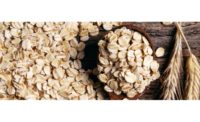Gluten-free products offer healthy growth opportunities

This year, the worldwide outbreak of COVID-19 tends to overshadow the fact that May is Celiac Awareness Month. However, both trigger a renewed focus on healthy living. For those with celiac disease or gluten sensitivity, concerns about food ingredients and the availability of gluten-free foods are day-to-day issues. Currently, with restrictions on restaurants and “stay at home” mandates, it’s especially important to find appealing take-out foods and prepackaged snacks that everyone in the household can enjoy.
Even without factoring in the changes brought about by COVID-19, the market for gluten-free food products has grown exponentially over the last decade or so and promises to continue. Awareness of the needs of the gluten-free community and improving the safety and quality of gluten-free products is given attention by the media and consumers. And there is a reason. According to Reports & Data, “[The] increase in diagnosis of celiac diseases and growing health concerns among the population is further expected to boost the demand for gluten-free products.” The study notes that the global gluten-free products market was valued at $4.35 billion in 2018 and is expected to reach $7.91 billion by 2026.
What’s out there, what’s not
Over the last several years, a larger number of gluten-free products have appeared on the shelves of supermarkets, as well as sold direct to consumers via online channels. Many of the largest food manufacturers in North America offer specially developed gluten-free products and advertise the availability of their gluten-free offerings, such as snack crackers made from grains other than wheat: oats, corn and rice among them. Some smaller niche manufacturers specialize in gluten-free products that also fit into the rapidly growing vegan and vegetarian market.
One market segment that is open to innovation and growth is gluten-free desserts. Most traditional cakes and pies are made with gluten-containing wheat flours, but “flourless” cakes and brownies have also become available, giving the gluten-free diner the ability to choose a dessert. And, though it’s not a dessert, pizza dough made with cauliflower has recently entered the market as a real innovation that many consumers buy, whether they are following a gluten-free diet or not, because they like the texture and the taste, and because of its perceived health benefits.
With the demands for more gluten-free options, baked goods manufacturers are ripe for this type of exploration and experimentation to find new products that deliver new textures and tastes consumers will love—with certain standards that need to be taken into consideration. It is important to be mindful when it comes to ingredient selection, storage and food preparation when claiming that a product is gluten-free.
Making it work
As part of the manufacturing process, developing gluten-free formulations and products involves research and development, not only to know which grains are appropriate—if grains are involved—but also which types of equipment or production lines might be necessary. The US Food & Drug Administration states that in order to be called “gluten-free,” a product must contain no intentionally added gluten, and less than 20 ppm (part per million) of gluten that may occur due to accidental cross contact or agricultural comingling. A shipment of non-gluten-free oats, for example, may contain much higher gluten levels due to cross-contamination with wheat and other grains during growth, harvest, transport and storage.
Similarly, attention to the possibility of cross-contact between gluten and gluten-free production lines is important. Larger manufacturers likely run different production lines for different product requirements, but not all producers can afford this. Smaller manufacturers may be able to use the same mixing bowls and ovens for making both gluten and gluten-free products, but these items must be thoroughly cleaned when switching between the two product lines. Regarding ovens, the primary focus should be on cleaning contact surfaces, and not necessarily the walls and ceilings of the oven, unless there is reason to view those as a source of cross contact. Another thing to consider is that specific types of equipment might be necessary for specific products—for crackers versus cheesecake, for example. Depending on the set up of the line, it may be difficult to impossible to clean completely from one batch of product to the next, so some equipment may need to be dedicated for gluten-free use.
Supporting your gluten-free claims
In the past few years, there has been a significant increase in stores throughout the country that are willing to devote shelf space to gluten-free products. Five years ago, a shopper looking for gluten-free products had to go to a natural products store. Today, mainstream retailers are providing large gluten-free sections. Major retailers are looking for products to be certified gluten-free if they’re going to have a gluten-free claim, because there’s risk if they have not gone through the steps of having their process and ingredients analyzed by a third party.
In marketing these products, packaging is a key consideration. With manufacturers that offer both gluten-free and non-gluten-free products, a clear differentiation as to which product is gluten-free is essential to the shopper. To label a food item “gluten-free” without taking care to be sure that it is, can make a consumer sick, literally. This opens the manufacturer up to lawsuits for false advertising and damage to its reputation and trust with consumers.
In most cases, achieving verifiable gluten-free product status requires expert knowledge. Organizations that deal specifically with celiac disease are good sources for guidance, while related groups will provide a highly credible gluten-free certification after reviewing your operation and finished products. A mark on your label that states the product meets gluten-free standards should be displayed prominently so that buyers who are seeking these products can easily make the correct choice.
There are many reasons for bringing a product to market, not the least of which is to meet the changing needs of consumers. According to a report by Research and Markets, the global gluten-free (GF) food market is expected to grow at a CAGR of 11.62 percent through 2021, driven in large part by growing awareness of the health benefits of GF foods, the prevalence of gluten intolerance and an increase in demand for GF options in restaurants. A product line strategy that involves expansion of a market you already have or adding something new makes sense when there is a clear need for a new segment.
Celiac Awareness Month is an opportunity to learn more about consumers living gluten-free and the products you can offer them, from desserts to pizza doughs and beyond. It is a great time to explore the ways you can extend your bakery product line with tasty gluten-free options that will meet the future needs of this expanding market as well as deliver growth and profitability to your business.
For more information, visit www.gluten.org and www.gfco.org.
Looking for a reprint of this article?
From high-res PDFs to custom plaques, order your copy today!








